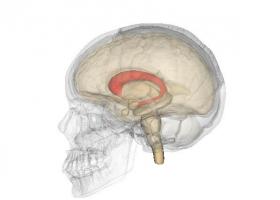The mechanisms that make the brain work are not only revealed through deficits caused by injurie...
Senile plaques are produced in the gray matter of the brain by the accumulation of beta-amyloid p...
Neurons are one of the most important cell types in our body, since they allow the transmission o...
The body of human beings is the result of million years of evolution of the material that we find...
Glial cells are essential for the functioning of the nervous system as they provide structure, nu...
It may be that most of us find it difficult to understand how machines work. However, next to our...
A good part of the brain structures they can be easily located and separated from the rest. Howev...
Within the brain there are numerous structures with very diverse functions, which are connected w...
Proteins (and amino acids) are one of the most popular macronutrients today, largely because food...

Even though all brains look almost the same, they are actually very far from it. It is true that ...
The basal ganglia are a subcortical region that is involved in various physical and cognitive fun...

When we think of the brain, we usually imagine the superficial and outermost layer, the cerebral ...